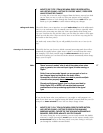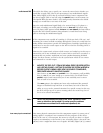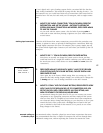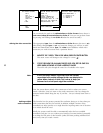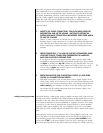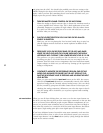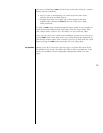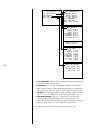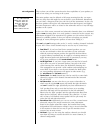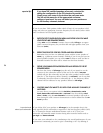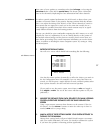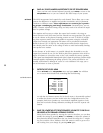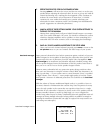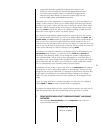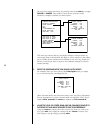
55
set configuration This is where you tell the system about the bass capabilities of your speakers, as
well as how many you are using in the system.
SET CONFIGURATION
FRONT L&R: 70Hz HPF
CENTER: 80Hz HPF
REAR L&R: 80Hz HPF
SUBS: LOW PASS
AUX1: RIGHT BACK
AUX2: LEFT BACK
RESET CONFIG FOR THX
The main speakers may be defined as full range, meaning that they can repro-
duce any deep bass that might be sent to them to your satisfaction. Alternatively,
you can select a frequency from 30 to 100 Hz (in 10 Hz increments). In this case,
the front speakers will receive only information from that frequency and higher;
the lower frequencies will be re-routed to the subwoofer and/or to any full range
speakers in the system.
In the case of the center, surround and subwoofer channels, there is an additional
option:
none (meaning there is no such speaker is connected to the system). Any
information designed to be reproduced by speakers you do not have will be re-
directed to available speakers so that you will hear everything you should.
(Though, of course, having more speakers is better than “faking it.”)
The aux1 and aux 2 settings refers to the 7
th
and 8
th
“auxiliary channels” included
in your AVP2. These “extra” channels may be used in any of several ways:
• Dual Drive™: if you have Dual Drive surround speakers, you can
use the Aux channels to drive the rear halves of your surrounds
while the surround outputs produce the signal for the front halves.
A special infrared command may be taught to a learning remote to
toggle between bipole and dipole modes of operation,or you may
set up your preferences in the mode defaults menu.
• Left & Right Back: if you have a large room, you may find it benefi-
cial to have two pairs of surround speakers, one pair to the sides
of the listening area and the other pair behind the listening area.
This arrangement can provide a more uniform and enveloping sur-
round field. If you select to use the Aux channels for Back speak-
ers, corresponding adjustments will appear in other menus (e.g.,
the set distance and set levels menus).
• Center Back: the aux1 channel may also be used for a center back
channel, in support of 6.1 channel surround modes like Surround
EX and DTS ES.
• Left Stereo Sub: you may also elect to use stereo subwoofers, in
which case the regular sub output will handle the right subwoofer
and aux 1 handles the right. Specifically, any bass information in a
“left” speaker (front, side or rear) that has been set to anything
other than full range will be reproduced in the left subwoofer;
likewise for the “right” speakers and the right subwoofer. Bass from
either the low frequency effects channel (also called the “.1” chan-
nel) or from a bass-limited center speaker will be split evenly be-
tween the left and right subwoofers.
• Extra Mono Sub: alternatively, you can use aux2 for a second mono
subwoofer output. This output contains the same information
found in the regular subwoofer output, but benefits from having
independent level and distance settings. Using a second subwoofer
in this manner is often the best way to get the smoothest. most
accurate bass in many rooms.
• Not Used: if you are not using the auxiliary channels, you should
turn them off. Doing so returns the AVP2 to a more common, 5.1
channel configuration.



